Since the start of air power the different aircraft have preformed many roles in out military. This section provides an overview of how military aircraft in World War I evolved, their specifications, roles, and impact on warfare during the early 20th century. Each aircraft type played a distinct role in shaping the development of aerial warfare strategies and technologies, setting the stage for future conflicts. See some of the details of various aircraft and how they influenced the war and the future of military aircraft.
- Aircraft Types
- Early Reconnaissance Aircraft
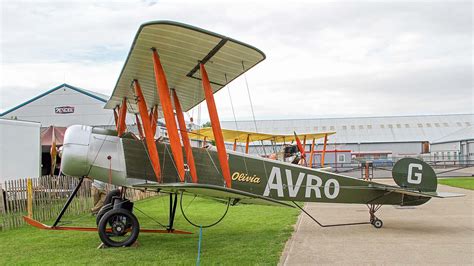
- Avro 504:
- Specifications:
- Engine: Various rotary engines (e.g., Gnome Monosoupape, Le Rhône)
- Speed: Up to 82 mph (132 km/h)
- Range: Approx. 300 miles (480 km)
- Armament: Typically unarmed or light defensive machine guns
- Deployment:
- Used extensively for reconnaissance missions over Western Front and Middle East.
- Specifications:

- Fokker E.I (Eindecker):
- Specifications:
- Engine: Oberursel U.0 rotary engine
- Speed: 87 mph (140 km/h)
- Range: Approx. 185 miles (298 km)
- Armament: 1 synchronized forward-firing machine gun
- Deployment:
- Introduced as a fighter aircraft, notable for its synchronized machine gun system.
- Specifications:
- Fighter Aircraft
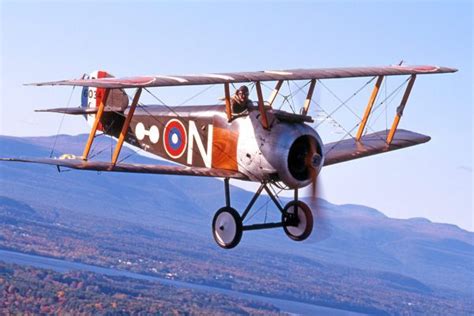
- Sopwith Camel:
- Specifications:
- Engine: Clerget 9B rotary engine
- Speed: 113 mph (182 km/h)
- Range: Approx. 300 miles (480 km)
- Armament: 2 × .303 in (7.7 mm) Vickers machine guns
- Deployment
- Played a crucial role in air combat on the Western Front, known for its maneuverability and combat effectiveness against German aircraft
- Specifications:
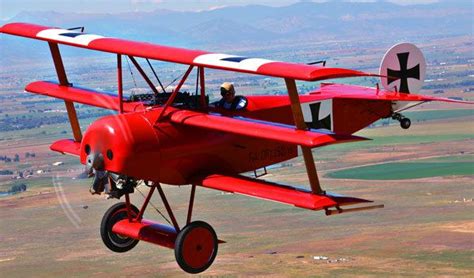
- Fokker Dr.I (Triplane):
- Specifications:
- Engine: Oberursel UR.2 rotary engine
- Speed: 115 mph (185 km/h)
- Range: Approx. 185 miles (298 km)
- Armament: 2 × 7.92 mm LMG 08/15 machine guns
- Deployment:
- Notable for its agility and distinctive triplane configuration, used primarily by German ace pilots.
- Specifications:
- Bombers
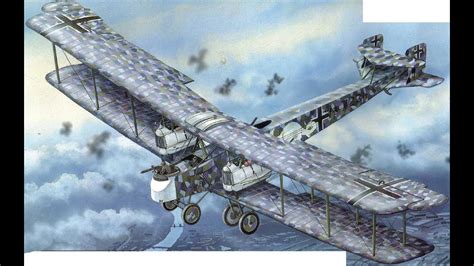
- Gotha G.IV:
- Specifications:
- Engines: Two Mercedes D.IVa inline engines
- Speed: 87 mph (140 km/h)
- Range: Approx. 540 miles (870 km)
- Armament: Various defensive machine guns, bomb load up to 2,200 lbs (1,000 kg)
- Deployment:
- Conducted strategic bombing raids over England, contributing to the development of bomber tactics.
- Specifications:
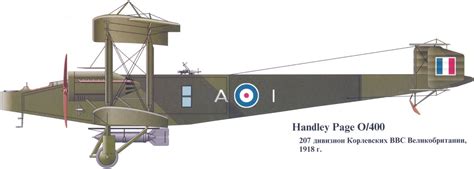
- Handley Page Type O (HP 0/100):
- Specifications:
- Engines: Two Rolls-Royce Eagle VIII inline engines
- Speed: 97 mph (156 km/h)
- Range: Approx. 600 miles (966 km)
- Armament: Defensive machine guns, bomb load up to 2,000 lbs (907 kg)
- Deployment:
- Used by the Royal Naval Air Service for long-range bombing missions.
- Specifications:
How were these planes used during WW!?
- Deployment
- During World War I, military aircraft were deployed extensively across various fronts:
- Western Front: Reconnaissance, aerial combat, and bombing missions were critical in supporting ground operations.
- Eastern Front: Limited aerial operations compared to the Western Front, with reconnaissance and occasional skirmishes.
- Middle East: Reconnaissance played a significant role in supporting campaigns against Ottoman forces.
- During World War I, military aircraft were deployed extensively across various fronts:
- Weapons and Engines
- Role of Machine Guns:
- Synchronized machine guns allowed for firing through the propeller arc, improving accuracy in air-to-air combat.
- Bomb Loads:
- Bombers carried increasingly heavier bomb loads, contributing to the evolution of strategic bombing tactics.
- Engine Designs:
- Advancements in rotary and inline engine technology improved aircraft performance and reliability.
- Role of Machine Guns:
- Success and Impact.
- Innovations in Aerial Warfare Tactics and Strategy:
- Introduction of fighter formations, dogfighting tactics, and strategic bombing influenced future military aviation doctrines.
- During World War I, the introduction of fighter formations, dogfighting tactics, and strategic bombing had profound implications for the development of military aviation doctrines that would shape air warfare for decades to come.
- 1. Fighter Formations:
- Prior to World War I, aircraft were primarily used for reconnaissance and lacked dedicated offensive capabilities. The need for aerial combat arose with the advent of fighter aircraft designed to intercept and engage enemy planes. Fighter formations, such as the famous German “Flying Circus” led by Manfred von Richthofen (the Red Baron), demonstrated the effectiveness of organized groups of fighters working together. These formations allowed for coordinated attacks, mutual support, and the ability to overwhelm enemy aircraft through numerical and tactical superiority.
- 2. Dogfighting Tactics:
- Dogfighting, or aerial combat maneuvering, emerged as a critical skill during World War I. Pilots developed tactics like the Immelmann turn, the Split S, and the use of deflection shooting to effectively engage and shoot down enemy aircraft. The skills and tactics honed during these aerial duels not only determined the survival of individual pilots but also influenced the development of future fighter aircraft designs and combat training doctrines.
- 3. Strategic Bombing:
- Strategic bombing, targeting key industrial and civilian centers deep within enemy territory, began to evolve during World War I. Bombers were used to disrupt enemy production and morale, marking a shift towards a more offensive use of air power. The bombing campaigns of the war laid the foundation for future doctrines that emphasized the importance of air superiority and the ability to strike at the heart of the enemy’s war effort from the air.
- Introduction of fighter formations, dogfighting tactics, and strategic bombing influenced future military aviation doctrines.
- Innovations in Aerial Warfare Tactics and Strategy:
- Influence on Future Military Aviation Doctrines:
- The experiences and lessons learned during World War I fundamentally shaped the development of military aviation doctrines in several ways:
- Emphasis on Air Superiority: The importance of gaining and maintaining control of the skies became a central tenet of future air doctrines. Fighter formations and tactics were refined to achieve air superiority, enabling friendly forces to operate without interference from enemy aircraft.
- Integration of Air and Ground Operations: The war highlighted the potential for aircraft to support ground operations through reconnaissance, close air support, and interdiction missions. This integration would become a cornerstone of modern combined arms warfare.
- Strategic Bombing Doctrine: The concept of strategic bombing, pioneered during World War I, evolved into a core component of military strategy in subsequent conflicts. It influenced the development of long-range bombers and shaped doctrines focused on targeting enemy infrastructure and civilian morale.
- The experiences and lessons learned during World War I fundamentally shaped the development of military aviation doctrines in several ways:
Overall, World War I was a crucible for the fledgling field of military aviation. The innovations in fighter formations, dogfighting tactics, and strategic bombing not only proved decisive in the outcome of the war but also laid the groundwork for the evolution of air power doctrines that continue to influence military strategies to this day.
- Strategic Role:
- During World War I, aircraft played pivotal roles that contributed significantly to the war effort and the dynamics of the Western Front. Here’s how aircraft provided crucial reconnaissance, disrupted enemy supply lines, and contributed to the eventual stalemate:
- 1. Reconnaissance:
- Aircraft provided a revolutionary means of gathering intelligence compared to traditional ground-based methods. Prior to the war, reconnaissance was primarily conducted by cavalry and patrols, limited by terrain and visibility. Aircraft, particularly reconnaissance planes equipped with cameras, allowed for rapid and extensive reconnaissance of enemy positions, movements, and fortifications. This aerial reconnaissance provided commanders with vital information for planning offensives, directing artillery fire, and anticipating enemy maneuvers.
- The information gathered by reconnaissance aircraft was crucial in understanding the evolving battlefield conditions, identifying weaknesses in enemy defenses, and adjusting strategies accordingly. It provided a comprehensive view of the vast and complex trench systems that characterized the Western Front, helping commanders make informed decisions that could potentially break the deadlock.
- 2. Disruption of Enemy Supply Lines:
- Aircraft also played a significant role in disrupting enemy supply lines, which were vital for sustaining troops and operations on the front lines. Early bombers, such as the French Voisin and the German Gotha bombers, conducted raids on enemy logistics hubs, rail lines, depots, and troop concentrations behind enemy lines. These bombing raids aimed to disrupt supply chains, hinder troop movements, and undermine morale by striking deep into enemy territory.
- The disruption caused by aerial bombing forced both sides to divert resources to air defense and to develop countermeasures against aerial attacks. This diversion of resources and manpower away from the front lines contributed indirectly to the maintenance of the stalemate by limiting the ability of either side to gain a decisive advantage through logistics superiority.
- 3. Contribution to the Stalemate:
- The Western Front in World War I became characterized by entrenched positions and a near-continuous line of heavily fortified trenches stretching from the North Sea to the Swiss border. This stalemate was maintained in large part due to the balance of defensive and offensive capabilities of both sides. Aircraft played a crucial role in this equilibrium:
- Reconnaissance and Intelligence:
- By providing accurate and timely intelligence, aircraft helped commanders on both sides anticipate enemy movements and fortify their defenses accordingly, making offensive breakthroughs difficult.
- Interdiction and Disruption: Aerial bombing raids disrupted supply lines and logistical support, but they were not yet effective enough to decisively break the deadlock. This disruption, however, contributed to the overall attrition and weariness of both sides, prolonging the stalemate.
- Limited Offensive Capability: While aircraft had begun to demonstrate their offensive potential, especially with the introduction of bombers and the evolution of fighter tactics, their impact on the ground war was still limited by technological and strategic constraints. The development of coordinated air-ground operations was still in its infancy during World War I
- 1. Reconnaissance:
- During World War I, aircraft played pivotal roles that contributed significantly to the war effort and the dynamics of the Western Front. Here’s how aircraft provided crucial reconnaissance, disrupted enemy supply lines, and contributed to the eventual stalemate:
In summary, aircraft in World War I revolutionized warfare by providing crucial reconnaissance capabilities, disrupting enemy supply lines through bombing raids, and indirectly contributing to the maintenance of the stalemate on the Western Front. Their role laid the groundwork for the future development of air power doctrines and strategies that would be further refined and implemented in subsequent conflicts.
- Impact on Warfare:
World War I marked a significant transformation in the conduct of warfare, particularly in terms of battlefield reconnaissance, air superiority, and the integration of air power into overall military strategy. Let’s delve into these aspects in more detail:
- Redefined Battlefield Reconnaissance
- Aerial Reconnaissance:
- Early Stages: At the beginning of World War I, reconnaissance missions were primarily conducted by cavalry units. However, the static nature of trench warfare made traditional methods less effective, leading to the adoption of aircraft for reconnaissance.
- Development of Techniques: Aircraft equipped with cameras were used to take photographs of enemy positions. These photos were then analyzed to determine troop movements, artillery positions, and trench layouts. Pilots and observers also used binoculars to gather real-time intelligence.
- Balloon Observations: Observation balloons tethered to the ground were used to gain a high vantage point, providing valuable information about the battlefield. Observers in balloons could communicate directly with artillery units, improving targeting accuracy.
- Impact on Strategy:
- Improved Accuracy: Aerial reconnaissance significantly improved the accuracy of artillery bombardments, as spotters could direct fire more precisely.
- Informed Decision-Making: Commanders had access to more accurate and timely information, allowing for better strategic planning and coordination of attacks.
- Air Superiority
- Aerial Reconnaissance:
- Emergence of Fighter Aircraft:
- Early Developments: Initially, aircraft were unarmed and used solely for reconnaissance. As the war progressed, the need to protect reconnaissance planes led to the development of armed fighter aircraft.
- Dogfights: Fighter pilots engaged in aerial combat, known as dogfights, to establish control of the skies. Notable aircraft included the German Fokker Eindecker and the British Sopwith Camel.
- Key Innovations:
- Synchronization Gear: The invention of synchronization gear allowed machine guns to be fired through the propeller arc without damaging the blades. This innovation gave pilots the ability to fire directly ahead, increasing the effectiveness of air combat.
- Ace Pilots: Skilled pilots, known as aces, became famous for their prowess in aerial combat. Figures like Manfred von Richthofen (the Red Baron) and René Fonck became national heroes.
- Strategic Importance:
- Air Superiority: Controlling the skies became crucial for both reconnaissance and ground support missions. Air superiority allowed for unimpeded reconnaissance and more effective ground attacks.
- Psychological Impact: The presence of air superiority had a significant psychological impact on both soldiers and civilians, influencing morale and public perception of the war.
- Integration of Air Power into Overall Military Strategy
- Tactical Integration:
- Close Air Support: Aircraft were used to support ground troops by strafing enemy trenches, dropping bombs, and attacking supply lines. This direct support helped break enemy defenses and disrupt logistics.
- Interdiction: Airplanes targeted enemy supply routes, railways, and communication lines, aiming to cut off supplies and reinforcements. This strategy aimed to weaken the enemy’s ability to sustain their war effort.
- Strategic Bombing:
- Early Bombing Campaigns: Although less effective compared to later conflicts, World War I saw the first use of strategic bombing. Bombers targeted industrial centers, military installations, and cities in an attempt to cripple the enemy’s war economy and demoralize civilian populations.
- Zeppelins and Gotha Bombers: The Germans used Zeppelins and later Gotha bombers to conduct raids on London and other cities, marking the beginning of strategic bombing campaigns aimed at civilian targets.
- Coordination and Communication:
- Improved Communication: Advances in radio technology allowed for better coordination between air and ground units. Pilots could relay real-time information to ground commanders, improving the responsiveness and effectiveness of military operations.
- Integrated Planning: Military planners began to incorporate air power into their overall strategy, recognizing the need for coordinated efforts between land, sea, and air forces.
World War I fundamentally redefined the role of air power in warfare. From its initial use in reconnaissance to achieving air superiority and integrating air power into broader military strategies, the conflict demonstrated the transformative potential of aviation. These developments laid the groundwork for the more sophisticated and strategic use of air power in future conflicts, highlighting its importance in modern military doctrine.
